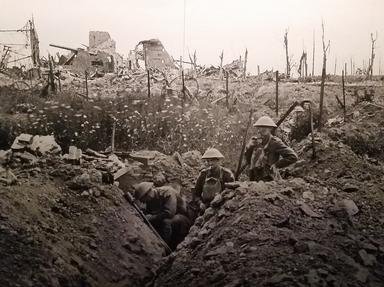Quiz Answer Key and Fun Facts
1. The German army first employed gas at Second Ypres. What kind of gas was used?
2. Phosgene was a derivative of chlorine gas. It had a killing power that was 18 times more powerful than chlorine gas. It was dreaded for what reason?
3. After Second Ypres, what piece of equipment were British soldiers issued to protect them from gas?
4. This particular type of gas was not meant to kill, but to harass and cause injury. It smelled like garlic or radishes, and was oily brown. It is better known as what?
5. After 1916, what was the percentage rate of men returning to duty after being hospitalized for gas exposure in the British army?
6. Mechanization was still in its infancy during World War I. Were there protective measures for animals to safeguard them against gas?
7. What counter measure did some of the kilted Highland regiments take against the blistering agents in mustard gas?
8. After the Germans used gas on the battlefield, what was the political outcome of that decision?
9. When a sentry saw a suspicious vapor cloud approaching, how did he sound a warning?
10. Was weather a factor in the use of gas on the battlefield?
Source: Author
beterave
This quiz was reviewed by FunTrivia editor
bloomsby before going online.
Any errors found in FunTrivia content are routinely corrected through our feedback system.

